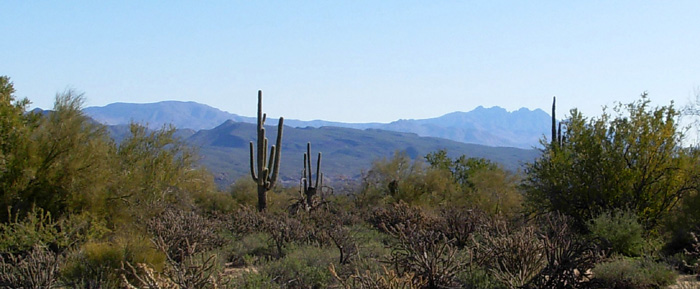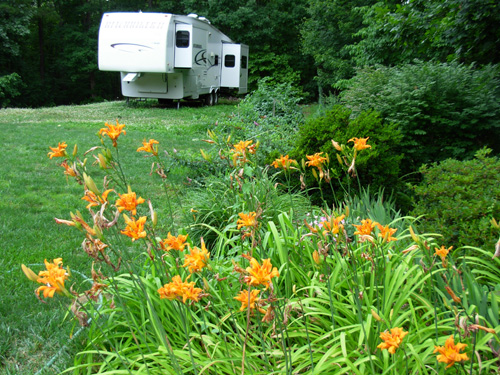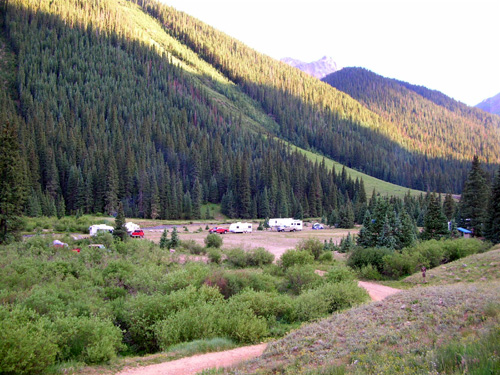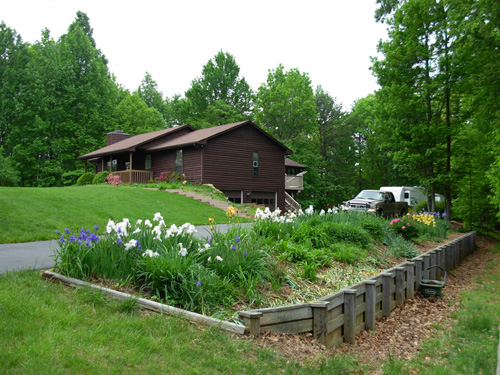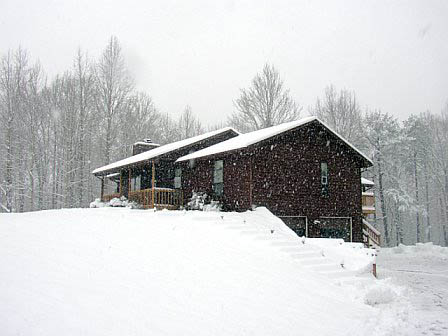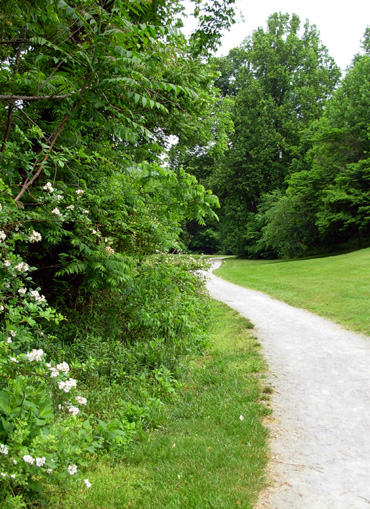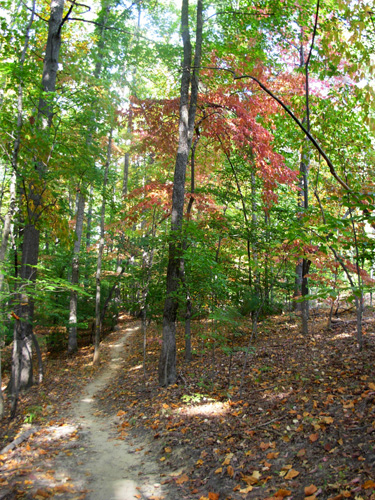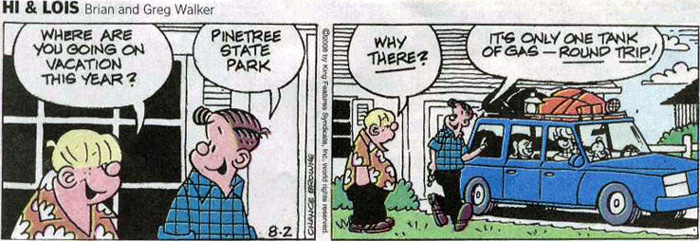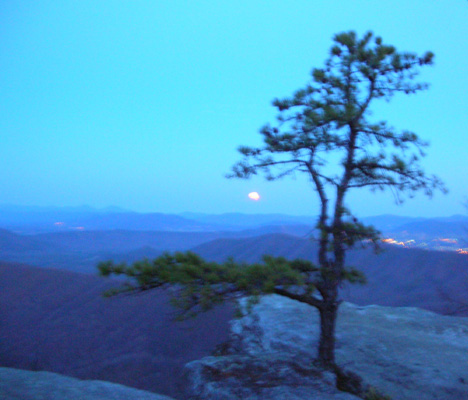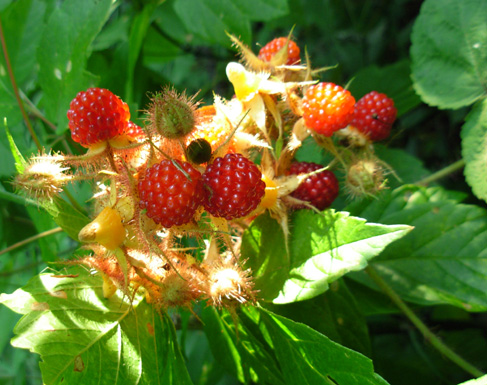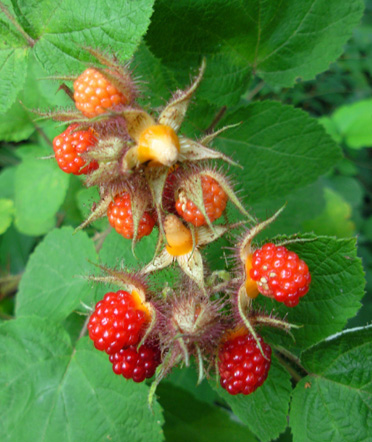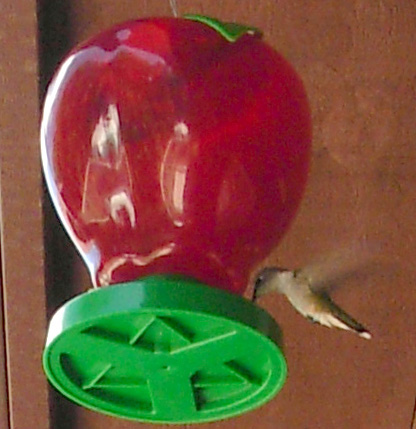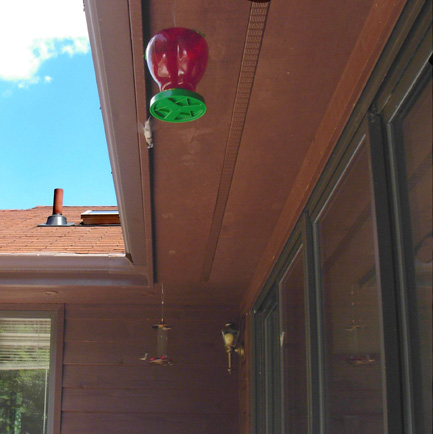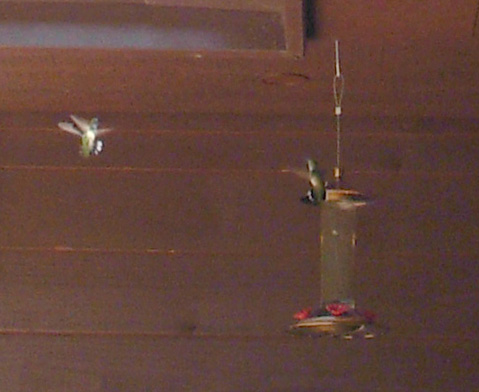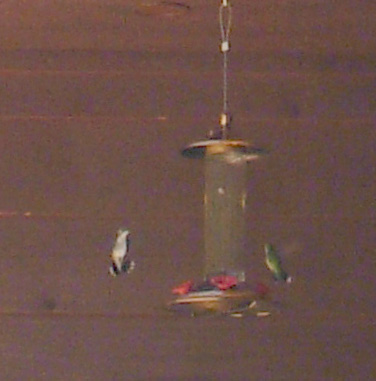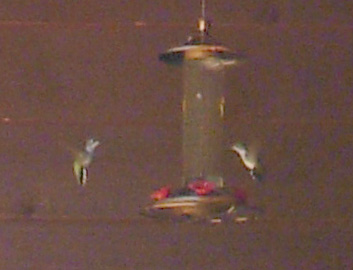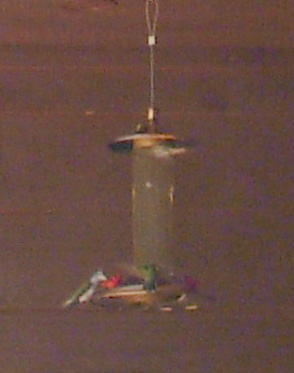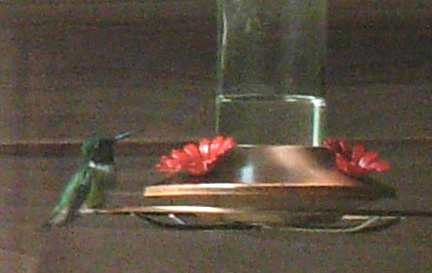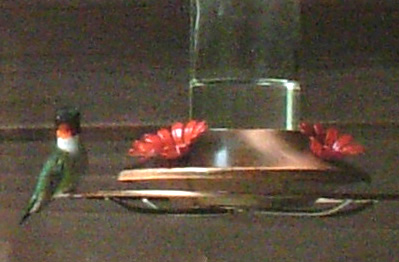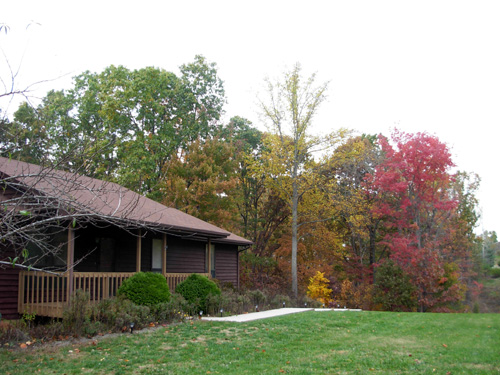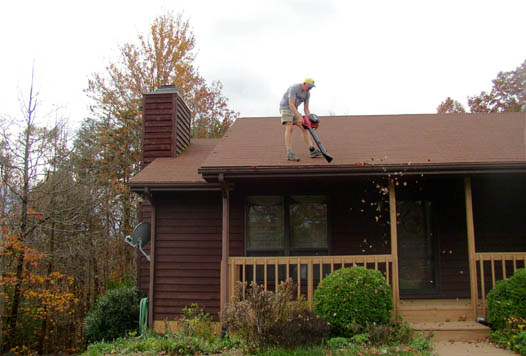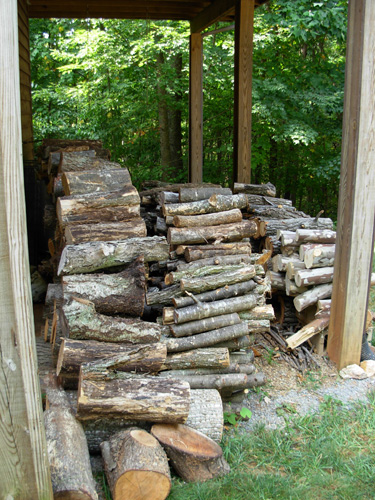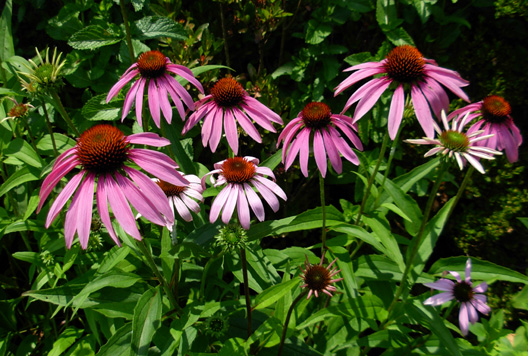|
2008 ULTRA RUNNING ADVENTURES
| ||
|
Runtrails' Web Journal
AUGUST 8
If you "google" for quotes about patience, you'll come up
with all sorts of high and mighty virtuous sayings. I laughed
out loud as soon as I spotted Bierce's sardonic definition
above. I've used the satirist's definitions a couple times in
previous entries, too. Gotta get a copy of his Devil's
Dictionary some day . . . I'm cynical enough to love
stuff like this.
Jim and I have tried very hard the last three months to be
patient and just deal with summer living-at-home
instead of summer camping-in-Wyoming-and-Colorado . . .
but every few days we whine a bit to each other and talk about
how much we miss being out West. We came this close to
driving the minivan to Silverton just to work Hardrock in July, but
fortunately we regained our senses when we realized how
logistically irrational that was.
In hindsight we wish we'd gone out West for the whole summer
again,
cost of diesel be damned. (Ironically, it's come down enough in price recently
that our trip back home at the end of August would have been
cheaper.)
We miss the cool mountain air, some of our favorite races, our ultra friends
from around the globe, the
more laid-back camping lifestyle. We are determined to go back
next summer for at least six weeks, maybe more.
The main expense for such long trips is the fuel to haul the
camper several thousand miles out and back. We are able to find plenty of inexpensive and free
camping sites near our favorite races and trails in Wyoming and
Colorado and we rarely eat out, so housing and food expenses are
about the same as staying home.. Because of fuel, it's more cost-effective for us to stay out there
several months rather than go for just a few days or weeks.
However, long absences from home in the summer have a hidden "cost" that's
harder to quantify -- keeping our yard and gardens weeded,
watered, and mowed when we're gone.
I'm not just talking about paying someone to do it.
We have a retired neighbor who's willing to mow for a reasonable
cost, and he provides great security, too. Last summer was so
hot and dry he didn't need to mow but once a month, and this summer
is similar. If Bob becomes unavailable, Jim has other friends in the rescue
squad and fire department
who can keep the grass under control.
The main problem with extended summer trips is that all the perennial beds go haywire in our absence.
Heck, it's hard to keep up with the yard and gardens while we're here
this summer!
We can't ask
Bob to weed and water so much territory, and there isn't anyone
else in the neighborhood we know to ask (nor any relatives close
by to cajole). So the weeds get totally out of control;
the beds look terrible all summer, and it takes a discouragingly long time
for me to
eradicate the weeds when we return in late August or September. In addition,
some of the flowers and shrubs have died from lack of water when
we aren't here. Roanoke has been in an extended drought for two
or three years, and this summer has been particularly dry.
We want to keep the yard looking nice, not just because of pride
of ownership and for the sake of our neighbors, but also because
we may sell this place in another year or two. We love the
house, yard, and woods, but it's all too much for us,
considering we want to travel half the year. The stairs are also
a problem as my granny knees get worse, and we'd rather be
closer to town so we can participate in more activities there.
We don't know if we'll stay in the Roanoke area or move back out
West somewhere since that's where we like to be in both the summer
and winter (Virginia is great in the spring and fall!).
No matter where we buy another house, it's not at all practical
to try to sell ours right now with housing and the stock markets
continuing to tank and prices on everything UP, so we'll wait
out the economic instability.
We might be here for quite a while!
Patience. Meanwhile, we're adapting to life in the Roanoke area
in the summer.
APPRECIATING WHAT WE HAVE
It certainly hasn't been all doom and gloom being at home in
Virginia, our first full summer here since we arrived in
March of 2004. There are a lot of things to enjoy and
appreciate.
For one thing, there are all the factors that
attracted us to Roanoke in the first place -- the beautiful scenery, the
multitude of trails and nearby races, the Blue Ridge Parkway, the mountains,
lakes, and streams, the friendly people, the interesting
downtown area, the relatively low cost of living, the mild
weather . . .
Well, OK, we've discovered summers aren't so mild here. I endured
twenty-five summers in the Atlanta area, and I can tell you
Roanoke is nearly as hot and humid even though it is over 400
miles farther northeast! We missed last summer's record-breaking
temperatures in August, and we're keeping our fingers crossed
that there isn't a repeat this year (so far, August has been
cooler than June). June began with a ten-day
period of unseasonable 90+ degree temps, but thankfully the rest
of the summer has been less intense.
The humidity is so thick it feels like you can cut it with a
knife most days, however. Training has been a challenge,
especially since we aren't real good about hitting the trail
before 8 or 9 AM. We try to do most of our running and yard work
in the early morning, then hole up inside the cool house during
the afternoon when it's miserably warm and muggy outside. Jim
and I don't do well in either extreme heat OR cold.
Housing and jobs in the Roanoke area haven't taken as serious a
beating this year as in many areas of the country. Although gas,
utilities, food,
other goods, and services have all recently spiked upward, it's
still a comparatively reasonable place to live. We both do our
best to "live below our means," although we
periodically have weird and/or unexpected expenses that eat into our
"play" money for races, travel, hobbies, and other
non-necessities -- a new
heat pump,
vehicle repairs, ailing dog (Tater has a multitude of physical
problems now at age 12), etc.
It's always something.
It's been interesting to see how low we can keep our electric bill this
summer. We make a (serious) game of it. For example, we use the solar
panels from the camper to power some of
the lights and appliances inside the house, we keep foam panels
in some of the windows when the sun shines directly on them
(most are shaded by the trees), and we turn off
lights and gadgets when we're not using them. Jim installed a fan to draw out heat
from the attic, and the new, high-efficiency heat pump costs
much less to run than our old, seriously-undersized one. We're perfectly
comfortable on hot, humid days in our dry, 76-degree air inside
the house; keeping the temperature higher than some folks
deem acceptable also saves us money (we do the reverse in the
winter, keeping it lower than average).
Jim and I are
also more mindful of the miles we drive into town (at least 17 miles one
way) and to our favorite running venues (above, 13-15 miles each way). We still get in three
weight workouts a week at the YMCA and run several days a week
at the closest trails. We aren't traveling as often to some of
the trails farther away that we used to run before the price of
gas spiked. We're also riding together more
often and taking the more fuel-efficient Odyssey minivan instead of both vehicles for our
various errands. It takes planning and compromise, but
we're conserving fuel and $$$.
There was an article in our paper recently reporting that
Americans drove 12.2 billion fewer miles in June
of 2008 than June of 2007 -- that indicates a lot of "staycations"
and other modifications of driving habits.
Patience. Adaptation. We aren't alone.
SERENDIPITOUS DISCOVERIES
We're making do and trying to enjoy every day. It's fun when we
discover something positive about summer-at-home that we didn't realize
or fully appreciate before.
WINEBERRIES
One nice surprise was finding a plentiful supply of succulent
wineberries along one of the trails we like to run adjacent to
the Blue Ridge Parkway. Not many hikers, runners, or equestrians
use this trail, and we didn't broadcast our find to anyone else
except my brother and his wife, who were visiting from the
Midwest!
Neither Jim nor I had tasted or seen wineberries previously. One day I saw a
couple who lives near the trail picking some berries for home
made ice cream; they told me what they are. For the next
three weeks, Jim and I made a point to run that trail more
often! I use "run" loosely, because we stopped every few feet to
pick the tasty berries and eat them right then and there. They
are sweeter and juicier than any of the local raspberries and
blackberries we've found.
At their peak in early July, I filled a quart bag full of plump,
ripe berries to take home a couple of times. My brother and
sister-in-law were also able to take some home with them in
early July. The berries were delicious
in cereal, yogurt, and ice cream. I never picked enough to
freeze, but I could have done so without feeling
guilty. The last couple weeks of their season, berries were
decaying on the canes because not enough people and birds were
taking them.
FIGHTER PILOTS WITH WINGS & BEAKS
Speaking of birds . . . did you know that hummingbirds can be quite the little aerial
artists, zooming here and there with amazing speed and alacrity?
Their wings make interesting "chirping" and other vibration sounds as
they dive in for a landing at the feeders and make sudden turns.
It's fun to watch their social interactions at the feeders. Some
play nicely and some are little terrorists.
We discovered the joys of hummingbirds soon after we moved to
Roanoke. This is apparently a pretty busy migratory route for
them, although we haven't seen as many different kinds of
hummers here as we've seen where we've camped in Colorado and
Arizona. I guess we've inadvertently teased the birds in
previous years because we'd set up a feeder in May, leave home
from June to September, and hang it up again when we returned.
They always came back, or new ones found us in the early fall,
but I wonder how they fed themselves all summer? Our flowers,
perhaps -- they like those, too.
We're curious just how many of the little guys we're feeding
this summer.
We've seen up to nine or ten at a time while we're sitting out
on the deck, seven from inside the house. (They move so fast,
they're hard to count!) One web site says to
multiply that number by three or four to estimate how many total
birds are using the feeders but I don't know how accurate that
is.
What I do know is that those birds go through over two cups of "bird juice" a day! It
seems like we're always making the sugar-water concoction for
them Jim jokes that they're going to eat us out of house
and home.
We have two feeders on our deck, shaded from the direct sun by
the roof overhang and hanging next to a wall of sliding doors so
we can watch their antics from the kitchen/dining/family room
area where we spend a lot of time. You can see both feeders in
the photo below, the red "apple" and a cylindrical glass feeder
in the far corner. My camera angle for these shots was a little
weird. I was sitting in a chair on the deck almost underneath the
apple feeder so the shots are better of it than of the feeder in
the dark corner:
It's a real treat -- and a hoot -- to watch them vie for sips
from the feeders. Some are quite peaceful team-players and
will share a feeder two at a time (each feeder has multiple
sipping tubes). Here's a fuzzy sequence of two birds at the
corner feeder who end up drinking together briefly. In the
fourth frame you can barely see the green back of one of the
birds but (s)he is drinking:
Some of the birds are more territorial and aggressive than that,
however, quickly shooing off
any others that come close to "their" feeder. The ruby-throated
hummers are the worst offenders we've observed at our house.
For a couple weeks we had one male ruby-throat
(shown below) that we called the "Juice Nazi"
in memory of the
Soup Nazi in one of our favorite Seinfeld episodes. No juice for
you!! he seemed to say to every bird who approached the feeder
in the corner that he was defending. It was so funny because
he'd just perch there and not even drink! None of the
other birds have ever perched for even a few seconds, let alone
minutes at a time. Even more odd, he faced the corner of the deck and not
the direction from which the other birds would swoop in.
Apparently he could hear them coming. Every time
another bird would approach, he'd suddenly fly up, chase it off, then resume his position.
It was quite amusing to watch, but after a couple days we began
devising ways to scare HIM off so the other birds could drink
from that feeder, too. Jim joked about grilled hummingbird
appetizers. I argued that they must be just bones and feathers,
since they seem to be in perpetual motion. Before we could figure out how to drive
the Juice Nazi away, he either reformed or left on his own. (We need little
colored collars on the birds so we can tell who is who, like
breeders do with newborn puppies.)
We'll miss our little feathered friends when they fly south for
the winter. What great entertainment!
SEASON BY SEASON
Since it hasn't been raining much this summer, Jim doesn't have
to mow very often. That's the good news. The bad news is that
our lawn is more brown than green in the front yard. That drives
him crazy. There's just too much area to water and we have no
intention of installing that large of an irrigation system.
We're on well water. Although it's basically free except for the
electricity to run the pump, we don't want
the well to go dry. We're using
enough water to keep the shrubs and flowers and some ornamental
and fruit trees alive, but grass is expendable and all the huge
trees in the woods are on their own. When we're gone in the
summer, the brown grass is moot -- we don't see how bad it
looks, and enough rain has fallen by the time we come home that
the lawn looks better.
Sometimes ignorance is bliss, or at least
less stresssful.
I mentioned the problems we face when we leave home for long
periods of time in the summer -- the weeds and drought.
There's also a problem with leaving home too early in the fall
for our winter trip -- all our deciduous trees have many,
many leaves. They don't stop falling until late November in this
climate. We don't rake. Jim mulches them with his lawn tractor or
collects them in the tractor's leaf bins
for composting. He also gets up on the roof to clean out the
gutters (photo below). Maybe it's about time we got those leaf-guard thingies
for the gutters so we'll have more travel flexibility in the
fall . . . It may not be such a problem this year,
however. Some leaves are already starting to fall because of the
drought. Maybe they'll all be down by the time we want to leave
in early November.
We've been good little squirrels this spring and summer, cutting
up and/or scavenging hardwood for the wood stove this winter.
Last year we ran out even though we were gone for two months and
we had a big electric bill for heating our first month back
(February-March).
We have a much larger supply "squirreled away" this time,
although it's been a lot of work to cut, haul, and stack it.
Most has been from our own property, some offered by friends and
neighbors who wanted the wood removed, and a bit we've rescued after
storms brought them down on public property (county, not
federal).
Between the extra fire wood and the new high-efficiency heat
pump, our winter heating bills should be as low as our summer
cooling bills. No kidding -- they're great with all the
cost-saving things we've been doing that I mentioned above! It
helps that the new HVAC system is infinitely more efficient than
the old one (and cost more than our summer trip to Colorado
would have been).
Patience. It will eventually pay for itself.
WHAT ELSE IS GOING ON?
Lots of things. There isn't any moss growing under our feet.
Jim's been keeping busy with the rescue squad all summer. It's
all volunteer work but it has some perks. He
passed his EMT-Enhanced test (written and practical) in mid-June with flying colors, second
highest in his class. He considered taking an intermediate class
from August to next June, then decided it would interfere too
much with our travels to races. He gets a lot of on-the-job
training with the number of calls he takes, and occasional one-
or two-day specialty classes offered by the county.
He's also
putting in several additional nights a month in a new program
at the Bedford County rescue headquarters that tries to better cover
the early morning hours (2AM to 6AM) when volunteers are least
likely to respond to calls and paid staff aren't working. He
gets to go all over the county on those nights, not just his own
squad's territory. He
enjoys rescue work (most of the time), but it plays havoc
with our sleeping patterns since he's on call at least two
nights a week. He's been running very few fire calls lately;
there are more local volunteer firefighters than EMTs so he
focuses on the rescue work
We also keep busy with gardening (see next two entries), our training (another
one or two entries coming up soon),
plans for our fall and winter travel itinerary (ditto), volunteer trail maintenance
on several local trails, other
volunteer work in the community, local races,
participating in activities with the organizations to
which we belong, seeing friends, visiting relatives, keeping our
house and vehicles maintained, providing geriatric care to our
aging Labrador retriever, and enjoying various other
projects and hobbies (like the AT memory books -- I'm only about
a quarter done with those)..
Jim still jokes that he got more done when he was working full
time than he does since he's retired. Well, Sweetie, you aren't
55 -- let alone 35 -- any more and neither am I. We hate to
admit it, but we just don't have as much energy as we used to.
Mid-afternoon naps sometimes help. Around 2 PM it's about all we
can do to stay awake!
Next entries: now that I'm on a roll and back to writing
again, I've got several running-related entries coming soon
about our training, fall and winter races, and upcoming travel
plans. But first I want to share some photos and stories
about all the gardening I've been doing and our efforts to
out-wit the critters with whom we share our acreage. (If you
aren't interested in non-running content, check the topics page for the next
running-related entry I upload.)
Stay cool,
Sue
© 2008 Sue Norwood and Jim O'Neil |
|||
